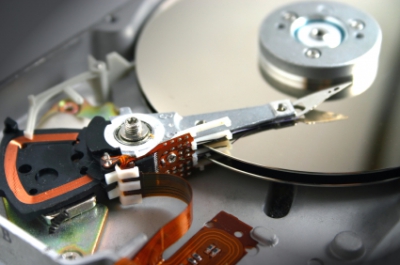- try to recover the disk by parts. It can be done by setting a certain range of disk sectors to be analysed.
- try to lower criteria in accordance with which files are accepted as bad (in some programs this criterion is called “Bad file Acceptance Setting”.)
- try rewriting analysis results to the disk file (in the faulty hard drive!), not to extended memory.
If the problem persists, you can try running another program or sending the hard drive to the data recovery company.
Symptom No 2. Hard drive capacity as determined by data recovery program is different from real
Compare hard drive capacity determined by data recovery program with its real capacity. If the program gets incorrect hard drive capacity from BIOS, then data recovery is out of the question.
- check whether specified in BIOS parameters of hard drive’s geometric model are real. If not, correct them. By entering correct values, give a possibility to BIOS to recognize the hard drive automatically. Find out from instruction manual whether there is any other geometric model acceptable for that particular hard drive.
- if the system has hard drive overlay software (for example, Disk Manager or MaxBlast), then BIOS may not have suitable hard drive’s geometric model parameters. You will have to boot the system from diskette with DDO launcher and only then proceed to data recovery.
- make sure that logical block addressing is on in BIOS. It is required for disks over 312 Mb.
- check hard drive’s parameters that are read out by system’s BIOS from it. In some cases (huge disk capacities) they are restricted at the level of 16383x16x63 regardless of real capacity. Most often it means that you need to update system’s BIOS or install new controller that is able to ensure normal work of the device.
Symptom No 3. Data recovery program displays wrong results because it cannot recognize hard drive’s structure correctly
If data recovery program automatically recognizes the structure of hard drive, you can turn off this mode and restart data recovery process. In this case program will suggest to confirm its interpretation of hard drive’s structure: size of cluster ‘С’ (i.e. number of sectors in cluster), number of starting ‘Nb’ and final ‘Ne’ cluster containing data. Determined by the program size of logical volume (in kilobytes) can be calculated using the following formula:
(Ne-Nb)*С/2
If the result matches real size of the volume being recovered then you can try and recover it. If the result didn’t satisfy you then you can try once again and determine the correct hard drive’s structure. If you cannot do it then just in case make sure that data recovery program you use is compatible with volume’s file system (for example, program intended to work with FAT32 cannot correctly recognize the structure of disk with FAT16).
Symptom No 4. Data recovery program recovers not all lost files and directories
Sometimes it happens in case of setting too light recognition criterion. Try to make it tougher. In this case program will require more time but it will allow recovering more files and directories.
Symptom No 5. Hard drive makes strange sounds
All hard drives make soft sounds during work. When disks spin up they emit a sound of increasing tone passing into smooth noise; when heads move from one track to another you can hear soft clicks – such sounds are completely normal. However, if your hard drive is clicking or scratching loudly it most probably means that the device is about to fail. In which case you need to immediately back all your important data up and replace it at the earliest opportunity. In case if it has already failed, do not run data recovery programs. Buy new hard drive and copy all data from last backup to it and send failed hard drive to specialized hard drive repair company.

Symptom No 6. Necessary file doesn’t recover
Using any data recovery program doesn’t give you a 100% success guarantee. If program cannot locate the file to be recovered, then most probably you would have to prepare for worst (you can try another program though). Perhaps hard drive is physically damaged. In this case you should contact specialized repair and recovery company.
Symptom No 7. The file you need doesn’t open after recovery
Even recovered file may contain incorrect data. Recovering file with the help of special program does not guarantee that it is correct. Perhaps file contents were irreversibly lost before recovery took place or even during the recovery process. If even partial data recovery is desired then you can use application software for this purpose. In particular, Microsoft Word has a special mode to recover texts from random file.
Symptom No 8. Hard drive diagnostics shows bad sectors
Some amount of bad sectors is normal thing for any hard disk drive. Usually such sectors are logically remapped to a special dedicated area. But if number of bad sectors is too high or it increases with time, there is a possibility of early failure. Try not to boil down to it, backup data and replace your hard drive as soon as possible.

 When using practically any data recovery program you may face different difficulties. This is what we are going to explore in this article.
When using practically any data recovery program you may face different difficulties. This is what we are going to explore in this article.